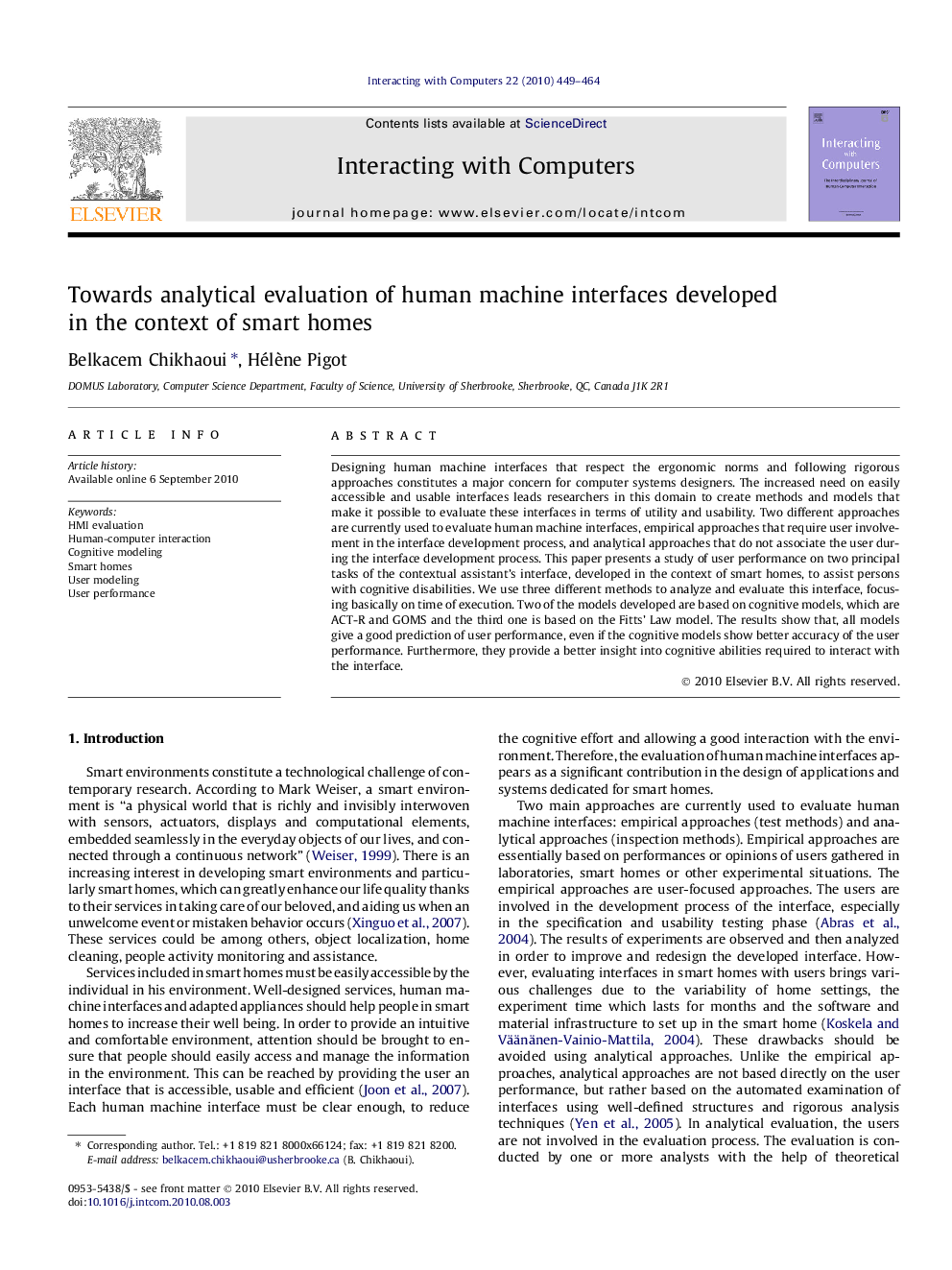| کد مقاله | کد نشریه | سال انتشار | مقاله انگلیسی | نسخه تمام متن |
|---|---|---|---|---|
| 553040 | 1450790 | 2010 | 16 صفحه PDF | دانلود رایگان |

Designing human machine interfaces that respect the ergonomic norms and following rigorous approaches constitutes a major concern for computer systems designers. The increased need on easily accessible and usable interfaces leads researchers in this domain to create methods and models that make it possible to evaluate these interfaces in terms of utility and usability. Two different approaches are currently used to evaluate human machine interfaces, empirical approaches that require user involvement in the interface development process, and analytical approaches that do not associate the user during the interface development process. This paper presents a study of user performance on two principal tasks of the contextual assistant’s interface, developed in the context of smart homes, to assist persons with cognitive disabilities. We use three different methods to analyze and evaluate this interface, focusing basically on time of execution. Two of the models developed are based on cognitive models, which are ACT-R and GOMS and the third one is based on the Fitts’ Law model. The results show that, all models give a good prediction of user performance, even if the cognitive models show better accuracy of the user performance. Furthermore, they provide a better insight into cognitive abilities required to interact with the interface.
Research highlights
► Analytical evaluation of HMI reduces time and cost comparing to empirical evaluation.
► Cognitive models perform well in predicting user performance.
► Analytical evaluation of HMI can be performed without user involvement.
► Analytical evaluation helps to improve and redesign interfaces.
► Principles for conducting analytical evaluation using three models are discussed.
Journal: Interacting with Computers - Volume 22, Issue 6, November 2010, Pages 449–464